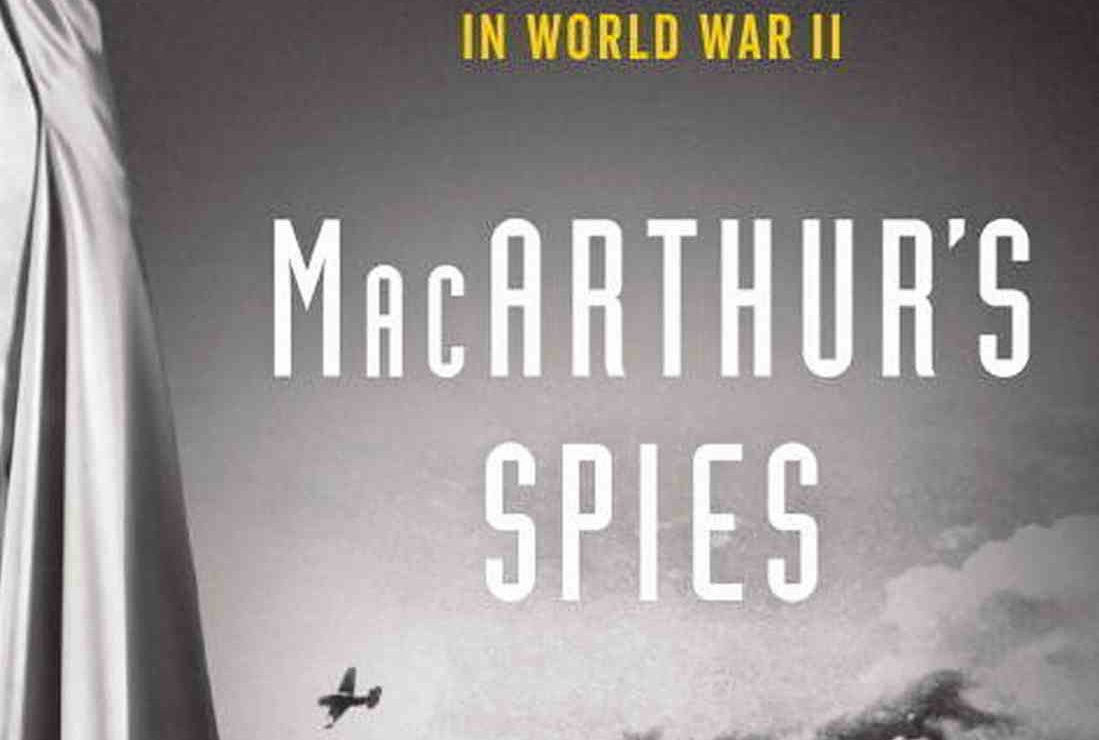
The Philippines—a crucial location viciously fought over by the Japanese Empire and the Allied forces—has its own share of these stories.
The latest nonfiction book to tackle it is “MacArthur’s Spies: The Soldier, the Singer and the Spymaster Who Defied the Japanese in World War II” by Peter Eisner (Viking, New York, 2017, 348 pages).
It is a book with a premise so dangerous it’s hard to believe it wasn’t made up. The “soldier” is Cpl. John Boone. The “Singer” is Claire Phillips, and the “Spymaster” is Lt. Charles “Chick” Parsons.
When the Japanese forces took over Manila in 1942, American citizens would have been wise to leave the city, as they would be on the receiving end of Japanese fury. Boone, like other American soldiers, disobeyed the order to surrender, and instead relocated to the jungle to lead guerillas throughout the rest of the war.
True-blue spy
Unlike Boone, Parsons was a true-blue spy. He stayed behind posing as a citizen from Panama to carry out secret missions and gather intelligence: “Fearless, suntanned and disguised as a peasant, Chick could blend in if he wanted to … If Japanese patrols stopped him along the way, he showed Philippine documents, spoke Tagalog and Spanish, blended in, and gave no hint he was an American, much less a spy.”
When things got too hot for his family, Parsons went to the United States. And then, when MacArthur needed him to do so, he returned to the Philippines with commandos under the cover of darkness to continue his spy game.
There is much evidence of Filipino ingenuity and courage in the terrible days of the Japanese occupation, embodied by the covert agents whose activities Eisner chronicles in “MacArthur’s Spies.”
Among them are: Ramon and Lorenza Amusategui, Naomi Flores and Filomena Guerrero. Some of them would pay the ultimate price in defying the Japanese: execution, detention and torture.
Heart of the story
The heart of “MacArthur’s Spies” is the story of Claire Philllips, the American also known as Dorothy Fuentes, Madame Tsubaki, and, most importantly, the operator known as “High Pockets.”
As Madame Tsubaki, she ran a nightclub in Manila called the “Tsubaki Club,” where she would entertain Japanese officers but secretly draw information on troop movements from them.
As High Pockets, Phillips played an important part in the intelligence network that would save many a prisoner of war from starvation by moving much needed food and supplies to the POWs.
Phillips is not a completely unknown figure. After the war, she wrote a book about her exploits called “Manila Espionage” and her life was made into a movie called “I Was an American Spy” in 1951, featuring actress Ann Dvorak.
Phillips is the first to admit that the book and the movie were so heavily fictionalized they hardly depicted what really happened with accuracy.
Terrifying tale
That’s what Eisner seeks to correct. Through detailed and exhaustive research, Eisner essentially reveals, for the first time, the travails and the adventure of Phillips.
Combined with the guerilla warfare of Boone and the derring-do spying of Parsons, Phillips’ risky dual life made for a tense, terrifying and terrific tale of Americans doing the unthinkable to fight back against the Japanese.
Eisner also paints a powerful and painful portrait of everyday Filipino life under the Japanese, all the way to the horrifying carnage of the Battle of Manila, when Japanese forces dug in and went insane, resulting in massive destruction and loss of life as the Americans came to take back the city.
It should be noted that Eisner has a personal connection to this story. His father, Ensign Bernard Eisner, was a pilot of an LST (landing ship, tank) that brought troops to the beaches of Leyte. “More broadly, the details of the Pacific war were less told than the many stories surrounding the fight against Hitler in Europe,” Eisner explains.
Peter Eisner has done his part well. “MacArthur’s Spies” is a thrilling, tragic and triumphant tale of courage under everyday fire—a treasure of real wartime storytelling about sacrifice and subterfuge right under the Japanese’s noses.
Available in hardcover at Fully Booked, La Solidaridad Book Shop and National Book Store.













































